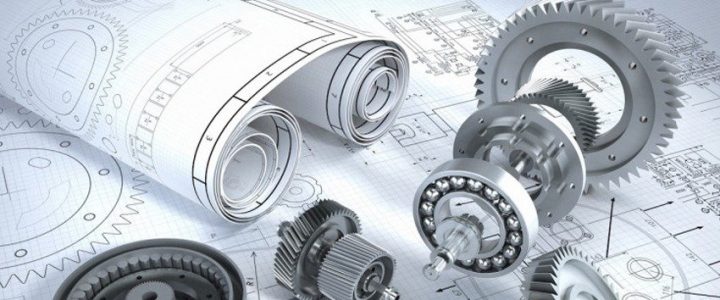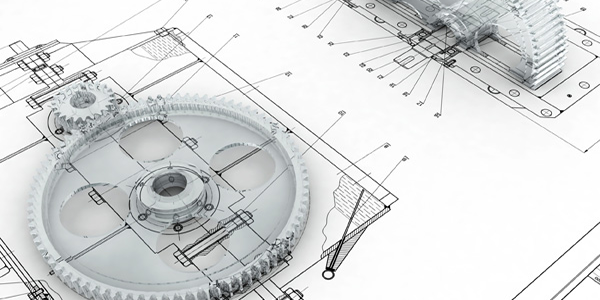| 3 YEAR | 2 semester | 9 CREDITS |
| Prof. Alexandro Catini | 2019-20 |
| CATINI ALEXANDRO | 2020-21 2021-22 |
| Code: 8039740 SSD: ING-INF/01 |


| 3 YEAR | 2 semester | 9 CREDITS |
| Prof. Alexandro Catini | 2019-20 |
| CATINI ALEXANDRO | 2020-21 2021-22 |
| Code: 8039740 SSD: ING-INF/01 |

| 3 YEAR | 2 semester | 9 CREDITS |
| Prof. Fabrizio Quadrini | since 2019-20 |
|
Fabrizio QUADRINI (6/9 cfu) LEANDRO IORIO (3/9 cfu) |
2022-23 |
| Fabrizio QUADRINI | since 2023-24 |
| Code: 8037968 SSD: ING-IND/16 |
LEARNING OUTCOMES:
Basic knowledge about manufacturing processes for metals.
KNOWLEDGE AND UNDERSTANDING:
Conventional technologies for metals are studied. In order to stimulate student’s knowledge, the interaction between material and tools is always highlighted. The student is able to analyse and evaluate any manufacturing process with a proper technical language.
APPLYING KNOWLEDGE AND UNDERSTANDING:
Thanks to the interaction between frontal lessons and laboratory activities, the student is stimulated to have an own technical profile. He will be able to manage technologies with technical language and sketch capabilities.
MAKING JUDGEMENTS:
The student develops own skills and capabilities in describing transformation processes by taking example from the frontal lessons.
COMMUNICATION SKILLS:
Students are invited to describe technologies in a proper technical way and with an adequate technical speech.
LEARNING SKILLS:
Learning skills are continuously improved thanks to the applied methodology for technology description. This methodology can be translated to any other technological process. Capabilities increase because of the number of described technologies and their correlation. Examples from the industrial world and laboratory experiments crystallize the knowledge about new technologies.
SYLLABUS:
Materials structure and properties: structure of metals, crystals, thermal stresses, solid solution, material properties, mechanical behavior, testing, and manufacturing properties of materials, metal alloys: structure and strengthening by heat treatment
Manufacturing of metals: fundamental of metal-casting, metal-casting processes and equipment, bulk forming (rolling, forging, extrusion and drawing), sheet-metal forming, sintering, fundamentals of machining, cutting-tools, machining processes (turning, drilling, milling).
Joining processes and advanced machining: fusion-welding, solid-state welding, adhesive-bonding, fastening, rapid-prototyping processes and operations, additive manufacturing.
Laboratory lessons: mechanical tests, surface engineering, hardness of metals, microscopy.

| 3 YEAR | 2 semester | 9 CREDITS |
| Luciano CANTONE | since 2019-20 |
| Code: 8037969 SSD: ING-IND/14 |
OBJECTIVES
LEARNING OUTCOMES: Designing mechanical components considering the need to save weight, material and energy while respecting safety, to promote the usefulness and social impact of the designed product.
KNOWLEDGE AND UNDERSTANDING: The design of mechanical systems; in particular, basic knowledge of the design methodologies of important machine components.
APPLYING KNOWLEDGE AND UNDERSTANDING: Knowing how to recognise, distinguish and use the main techniques and tools for the design of mechanical components.
MAKING JUDGEMENTS: Students must assume the missing data of a problem and be able to independently formulate basic hypotheses (such as that on safety coefficients) based on the operational and functional context of the system/component they have to design.
COMMUNICATION SKILLS: Transfer information, ideas and solutions to specialist and non-specialist interlocutors through intensive use of English terminology.
LEARNING SKILLS: Students, by learning the basics of design, acquire the tools to learn the necessary design techniques of systems/components not directly addressed during the course.
COURSE SYLLABUS
The first part of the course is addressed to the consolidation of basic knowledge to put the student in the right conditions to face a generic machine design problem: Mechanical Engineering design in Broad, Perspective, Load Analysis, Materials, Static Body Stresses, Elastic strain, Deflection, Stability (Eulerian buckling), Vibrations (beam Eigen-modes), Failure Theories, Safety Factors, Reliability, High cycles Fatigue, Low cycles Fatigue, Surface Damage, Contact and impact problems.
The second part will cover specific design activities: Threaded Fasteners and Power Screws, Rivets, Welding, Bonding, Springs, Lubrication and Sliding Bearings, Rolling-Element Bearings, Spur and Helical Gears, Shafts and Associated Parts. During the course, several design activities will be demonstrated by exercises and by real-life applications.

| 3 YEAR | 1 semester | 9 CREDITS |
| Prof. Marco Ceccarelli | 2019-20 |
| CECCARELLI MARCO | 2020-21 |
| Code: 8037957 SSD: ING-IND/13 |
OBJECTIVES
LEARNING OUTCOMES: The course aims to teach students the knowledge and tools that are needed to address the issues that are related to the identification, modeling, analysis, design of multi-body planar systems, and in particular some transmission organs in English language and terminology
KNOWLEDGE AND UNDERSTANDING: modeling and procedures to recognize the structure and characteristics of mechanisms and machines
APPLYING KNOWLEDGE AND UNDERSTANDING: acquisition of analysis procedures for the understanding of kinematic and dynamic characteristics of mechanisms and machines
MAKING JUDGEMENTS: possibility of judging the functionality of mechanisms and machines with their own qualitative and quantitative assessments
COMMUNICATION SKILLS: learning of technical terminology and procedures for presenting the performance of mechanisms
LEARNING SKILLS: learning of technical terminology and procedures for the presentation of the performance of mechanisms
COURSE SYLLABUS

| 3 YEAR | 1 semester | 9 CREDITS |
| Prof. Marco Re |
since 2019-20 |
|
marco.re@uniroma2.it Code: 8037956 |
OBJECTIVES
LEARNING OUTCOMES
This course aims at providing the fundamentals of DIGITAL ELECTRONICS. More in detail, it deals with the characterization and design of combinational circuits starting from gates. The target technology is CMOS. Starting from the study of the CMOS circuits and the implementation of memory cells the course will face the design and characterization of sequential circuits.
KNOWLEDGE AND UNDERSTANDING
The student will be able to analyze and design combinational and sequential circuits.
Starting from these blocks the student will be able to write a high-level description of a complex digital system based on a computational unit and a control unit.
APPLYING KNOWLEDGE AND UNDERSTANDING
The student will apply the knowledge and understanding developed to the analysis of practical problems. This would imply critical knowledge in terms of silicon real estate and speed for both combinational and sequential systems.
MAKING JUDGEMENTS: The student will have to prove his critical awareness with respect to the simplifying assumptions useful to describe and analyze combinational and sequential systems as well as his critical awareness of the correct order of magnitude of performance parameters while dealing or designing digital circuits.
COMMUNICATION SKILLS
The student will prove, mostly during the oral test, his capacity of describing the operation and functioning of digital systems.
LEARNING SKILLS
The student will get familiar with the schematization of practical problems, mostly during the development of his skills for the written test. This mainly concerns combinational systems and sequential systems
COURSE SYLLABUS